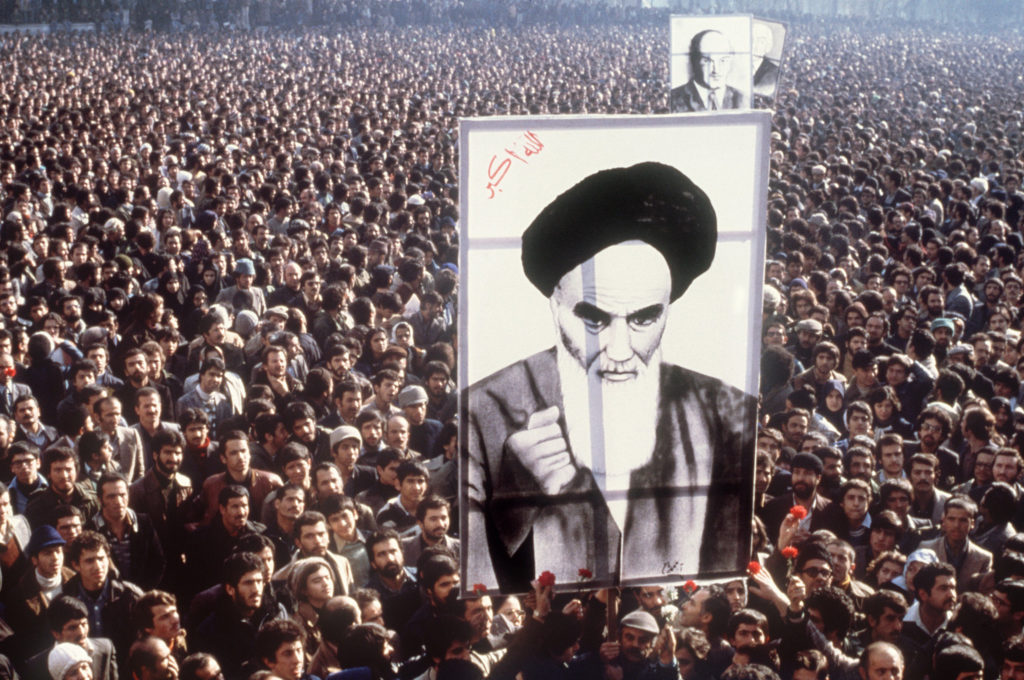Image Courtesy Agence France-Presse-Getty Images
In the early weeks of 1979, Iranians from across the nation rallied a common cry, a cry against imperial oppression. For more than half a century, the Pahlvi dynasty, Iran’s last ruling royal dynasty had presided over the Kingdom of Iran. Bathing in excess, luxury and wealth, opposition to the dynasty was harnessed during the reign of the last Shah of Iran, Mohommad Reza Pahlavi (who ruled from 1941 until his overthrow in 1979). The excesses of the monarchy deeply contrasted with the poverty of most Iranians. Reza Pahlavi unlike his predecessors, built his monarchy into an unpopular and arbitrary system steeped in terror and repression (the Reza Pahlavi monarchy has strong connotations with the Saddam Hussein administration in the following years). The Shah made heavy and full use of SAVAK the secret intelligence agency of the Pahlavi dynasty; and these officers were responsible for the state sanctioned repression. In addition to his absolutist and authoritarian rule, Shah Pahlavi embarked on a series of misguided economic measures dubbed the ‘White Revolution’. These economic reforms aimed at land reform, profit sharing for commercial farmers, price stabilization and enfranchising women. For the most part the White revolution resulted in explosive economic reform but the merits of the reforms were not equally distributed and further impressed the wealth gap upon Iranian society. Additionally, Reza Pahlavi and his family who had adopted much of western culture, imported the ideas of liberty and women’s emancipation to Iranian society. This was detested by Iranian Shi’ite clergy and a one Ruhollah Khomeini, also known as Ayatollah Khomeini.
Shah Pahlavi was also profoundly influenced and controlled by the West. In the height of the Cold War, the Americans and Soviets scrambled to secure alliances specifically targeting Asia and Africa. America claimed to play a pivotal role in the birth of modern Iran, closely supporting and funding major sectors of the White Revolution and funding generous programs of technical and financial assistance. The Shah’s close allegiance to America, further spurred on opposition to the dynasty and monarchy, fomenting a popular creed that the Shah was the puppet king of the Americans with an ‘unholy alliance’. Coupled with orchestrating mass arbitrary repression, corruption, economic reforms that pushed wealth into the hands of a minority group and close ties with America, the loudest voice of opposition sounded from Ayatollah Khomeini, who believed that Shah Pahlavi was luring Iran away from the order of pure Islam. What most fail to factor in is that when Khomeini was a very young boy, his father fell victim to the Shah’s repression and was murdered under suspicious circumstances; he forever held this grudge towards Pahlavi.
What changed? It was a revolution between the Iranian people and the state, to topple the monarchy and transition Iran into a republic. From the August of 1978, the revolution was now on overdrive; thousands of Iranians demanded the removal of the Shah and the installation of Ayatollah Khomeini as leader of Iran. In the midst of the crisis, US President Jimmy Carter publicly pledged American support for the Shah. Nevertheless, coerced by his countrymen, the Shah was deposed and the Ayatollah became the new spiritual leader of the republic; Iran now, ceased to be a kingdom with the collapse of the royal dynasty. The revolution ended liberal Iran and ushered in religious conservatism. The Iran hostage crisis (where Iranian revolutionaries held the American embassy under siege in addition to all embassy officials hostage for over a year), is indicative of the hostility the new republic would have towards western powers.
Why does 1979 matter today?
The Islamic revolution in Iran trumpeted a new age for the republic, the Ayatollah’s new Islamic populism called for Iranians to spread Islam across the world, a vow that still stands in Iran today. The Pahlavi state that was anchored to the West was destroyed when the revolution inherited Iran. The revolution altered regional geo-political dynamics forever, triggering unease amongst Iran’s neighbors (Iraq, Lebanon and Afghanistan) who feared the threat of a spreading revolution. Iran’s ally when the Shah was still on the throne, now became its worst enemy; Saudi Arabia with a majority Sunni population, feared the religious radicalism of the Khomeini and committed to prohibiting the spread of the revolution. Even today, the two nations have not resumed diplomatic ties. At the onset of the revolution the ruling House of Saud lauded the Khomeini for establishing a state on pure Islamic principles but feared they would face the same fate as the Shah when Khomeini began to call for the downfall of the ruling House. 1979 therefore, had global impacts by altering the foreign relations of not only the middle east, but also by altering their ties with the west. The complicated web of foreign relations we see in the middle east today, and its further convoluted tied with the west is somewhat rooted in the events of 1979.
